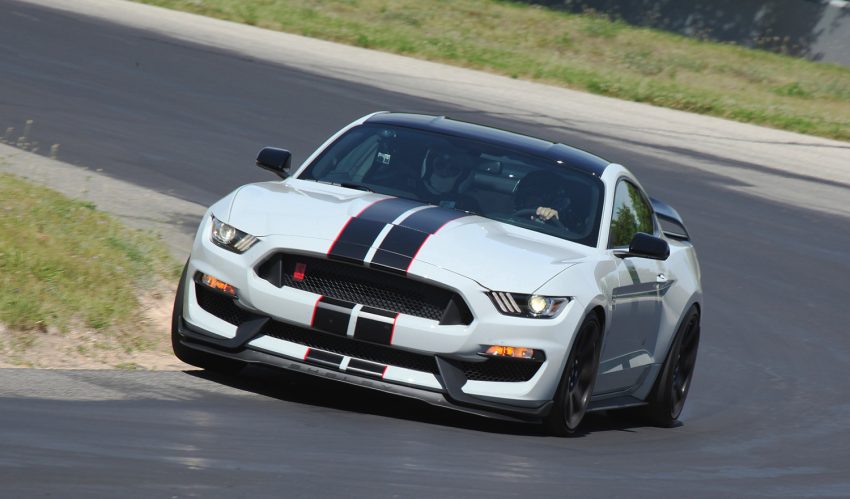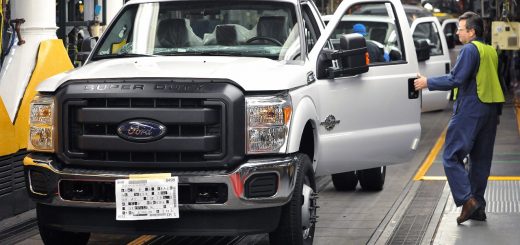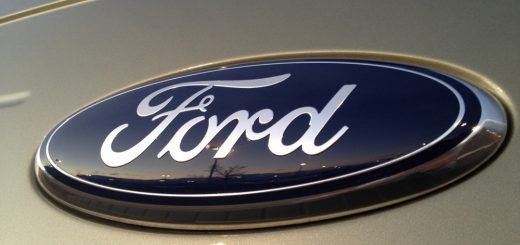Just a decade after Chevrolet briefly discontinued its Camaro, the Mustang-Camaro rivalry — now in its fifth decade — is stronger than ever. In the past 16 months, both Ford Motor Company and General Motors’ Chevrolet marque have released completely redesigned versions of their iconic muscle cars. If there ever was a textbook example of competition benefitting consumers, this would be an ideal candidate: both the Ford Mustang and Chevy Camaro have transformed from sporty yet affordable two-door cars with some of the cheapest power per dollar ratios on the market, to world-class-level sports cars.
Breaking up the Ford-GM muscle-car duopoly is the Dodge Challenger, from parent Fiat-Chrysler Automobiles. Though the oldest of the segment, the Challenger still offers many desirable qualities, such as an unmistakable presence, and up to a menacing 707 horsepower. Driving either of the three would put a big grin on the face of anyone without preconceived brand notions: the cars are just that damn good. But one look at the muscle car sales as a whole would turn that smile upside-down, right into a frown.
In the first seven months of 2016, cumulative sales of the Ford Mustang, Chevrolet Camaro and Dodge Challenger tallied 154,882 units, an 8.4 percent decrease compared to the same time period in 2015. Quite the dilemma for them business books.
Camaro vs. Challenger vs. Mustang Deliveries - United States
| MODEL | JUL 16 / JUL 15 | JULY 16 | JULY 15 | YTD 16 / YTD 15 | YTD 16 | YTD 15 |
|---|---|---|---|---|---|---|
| MUSTANG | +12.77% | 9,565 | 8,482 | -5.53% | 72,530 | 76,772 |
| CHALLENGER | +6.62% | 5,588 | 5,241 | -5.08% | 40,181 | 42,332 |
| CAMARO | -26.09% | 5,520 | 7,469 | -15.40% | 42,354 | 50,062 |
| TOTAL | -2.45% | 20,673 | 21,192 | -8.34% | 155,065 | 169,166 |
Outperforming The Market
Sales of the Mustang-Camaro-Challenger triad peaked in 2015 and then took a natural fall from those record-high numbers. Those notable records were caused by the Mustang’s highly-publicized 50th anniversary, as well as steep discounts on the last-gen Camaro intended to clear out inventory of the fifth-generation model during its run-out year on the market to make room for the all-new 2016 Camaro.
But looking at the bigger picture shows us that muscle car sales are simply following the general car market, which is down 8.5 percent to 4,139,064 units in the first seven months of 2016. As it turns out, then, the pony car troika is actually outperforming the general car market that’s still quenching its seemingly insatiable thirst for crossovers and SUVs.
Segment Going Strong
But don’t discount pony cars just yet: they are actually showing signs of considerable strength. Loyalty within the segment — a key metric in determining a sector’s health — has been steadily increasing over the past five years.
| Year | Segment Loyalty |
|---|---|
| 2012 | 17.10% |
| 2013 | 18.50% |
| 2014 | 17.40% |
| 2015 | 23.50% |
| 2016 | 23.80% |
Source: IHS Markit
Of customers who owned a Chevrolet Camaro, Ford Mustang or Dodge Challenger and then returned to trade it in for a new car this year, 23.8 percent stayed within the segment, a notable increase from 17.1 percent in 2012.
“There’s a market out there that’s attracted to the whole muscle-car concept and that market is stable,” IHS Markit analyst Tom Libby told Automotive News. “There’s a segment of the buying population that likes the attributes of those cars. They like the image, the styling, the sound, the transmissions.”
The ceaseless rivalry among Chevrolet, Ford and Dodge in the pony car space results in frequent improvements to the vehicles, in turn resulting in higher amounts of customer interest. The vehicle improvements in question can be seen in such qualities as the independent rear suspension on the sixth-generation Ford Mustang that replaced the solid rear axle on previous models, frequently identified as the culprit for its choppy ride, at least compared to cars with independent rear suspenders such as the Camaro. Meanwhile, the new, sixth-generation Camaro’s greatly-reduced curb weight and higher power output mean a better driving experience, while its improved interior and upgraded in-vehicle technology deliver a great driving car that’s also quite livable as a daily driver. The Challenger isn’t about to be left behind in the one-upmanship game: its cabin is quite the nice place to be while putting down an eyeball-popping 707 horsepower from its supercharged Hellcat V8, the most power in the segment.
The updates and vehicle improvements as a result of the three-way rivalry have made the three cars more capable, more fun, and better overall vehicles than they ever were. Hence, declining muscle car sales aren’t the result of lacking product capability or effort from the manufacturers. Whether a plateau or decline, current sales volume is the result of “what the market can bear in terms of product quality,” Libby reflected.
Explaining The Camaro Sales Decline
Perhaps most surprising is the 15.4 percent muscle car sales decline of the Chevrolet Camaro, which is notably steeper than the 5.5 percent drops seen by both the Mustang and Challenger. All-new for the 2016 model year to represent the sixth iteration of the nameplate, the 2016 Camaro gained substantial improvements in nearly every vehicle characteristic when compared to its predecessor. Most automakers see sales rise in the months following the launch of an all-new vehicle, thereby exacerbating the surprising turn of events at the Bowtie.
Chevrolet spokesman Jim Cain explains the Camaro’s decline by the fact that 2015 being a model change-over.
“A year ago we were running out the old model,” he said. “We had higher inventories and higher fleet sales.”
Presenting evidence that the “car is doing really well,” Cain highlights that Camaro transaction prices are up $3,584 over last year, according to Kelley Blue Book. General Motors has, indeed, been making a concerted effort to cut sales to daily rental car companies, which reduces overall sales volume but carries various benefits like higher resale and residual values, smaller incentives, and higher Average Transaction Prices (ATPs) — factors that GM hasn’t traditionally championed.
A Potentially Deeper Meaning
It’s vital to note that the Camaro, Mustang and Challenger are highly discretionary (rather than functional) purchases bought by people who “want” the vehicles, not because they need them. And discretionary purchases, such as performance and luxury cars, are typically the first to decline in an economic slow-down.
In fact, luxury car sales have fallen 13 percent in the first seven months of 2016, while the market has risen 1.1 percent. These statistics have made some wonder if the decline in muscle car and luxury car sales could be a harbinger for diminishing economic confidence, or an indicator of an impending economic recession. Looks like we’ll find out soon enough. In the meantime, go test drive and a Camaro, Mustang, or Challenger. It should do wonders to cheer you up.
About The Numbers
- All numbers and figures for United States market
- Sales numbers compiled from sales figures provided by automakers
More Pony Car Material
- Running Camaro vs Mustang vs Challenger sales numbers comparison
- General Motors July 2016 sales numbers
- General Motors sales numbers
- Chevrolet sales numbers
- Chevrolet July 2016 sales numbers
- Chevrolet Camaro sales numbers
- Chevrolet Camaro July 2016 sales numbers
- Chevrolet Camaro news
- Chevrolet Camaro July 2016 sales numbers
- Chevrolet Camaro sales numbers
- Chevrolet July 2016 sales numbers
- Chevrolet sales numbers
- General Motors sales numbers
- Ford Motor Company July 2016 sales numbers
- FCA July 2016 sales numbers














Comments